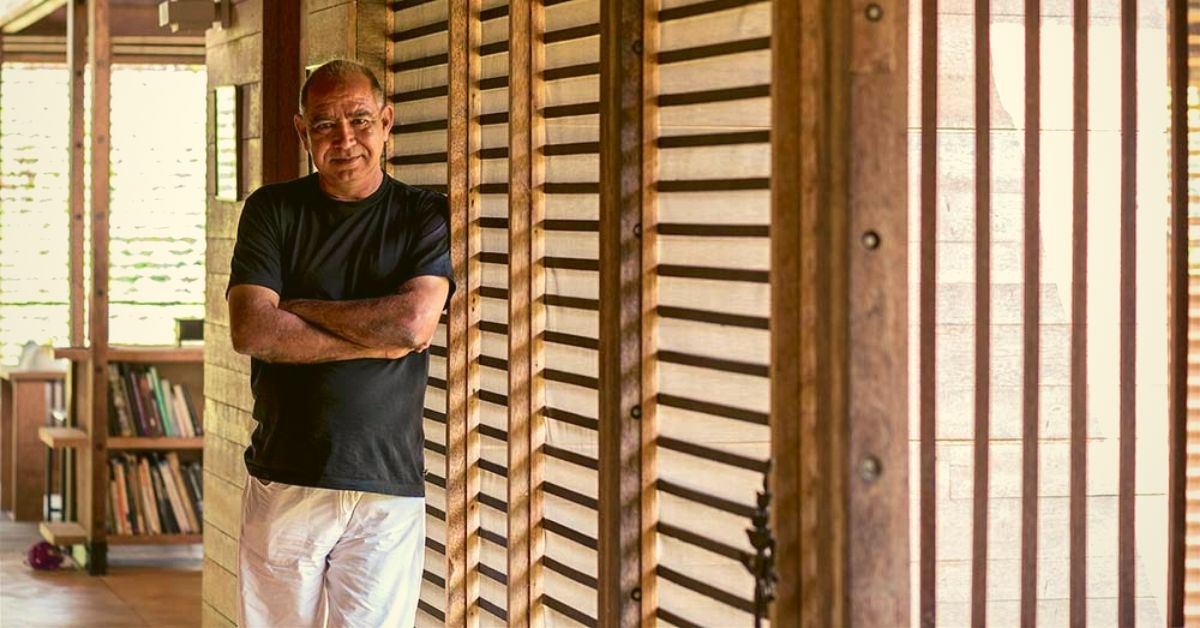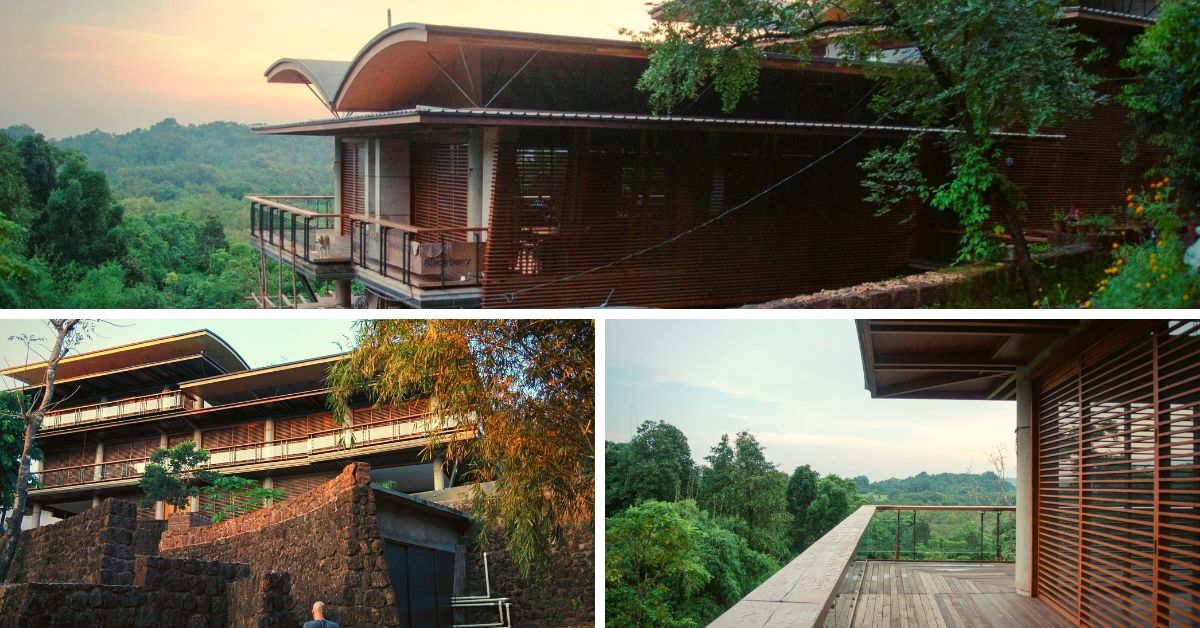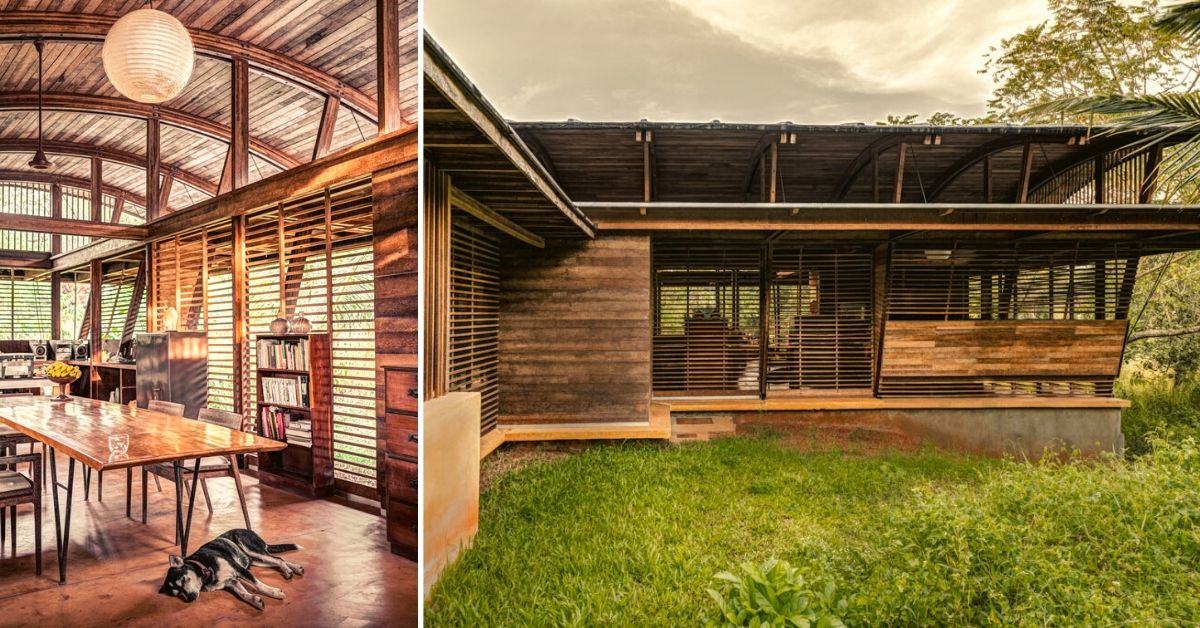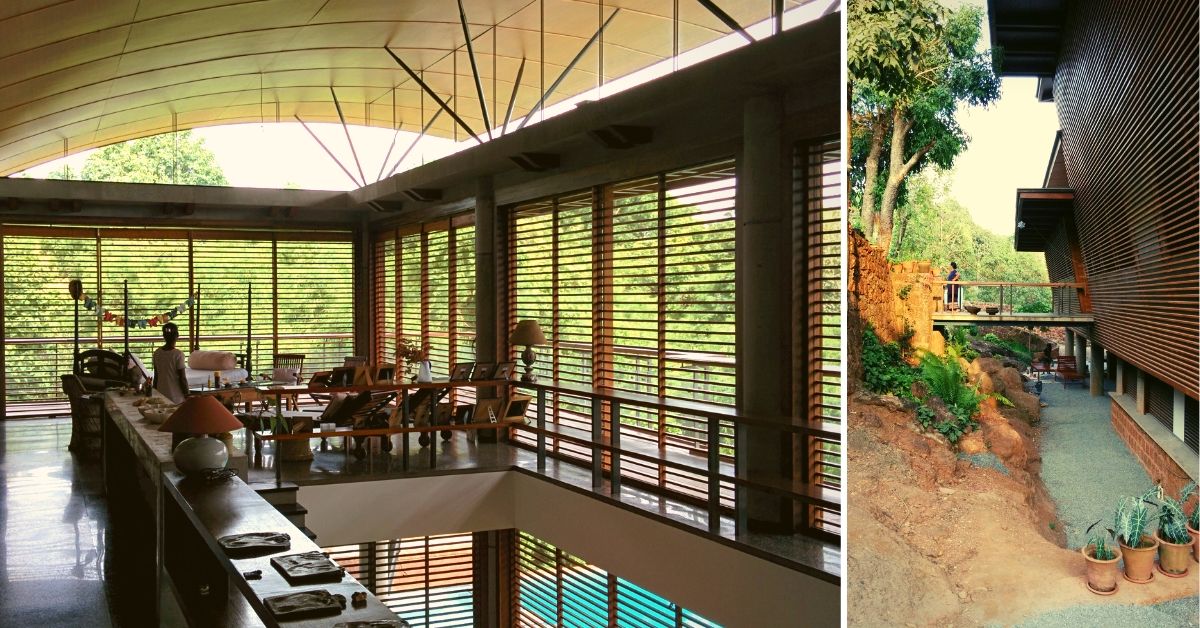Built With Coconut Wood, This Extraordinary Goan Home Has No Walls or ACs
“In this house there is no sense of enclosement. It is like sitting under a tree, there is shade but no obstacles. Privacy is achieved by means of light-weight storage modules that can be re-arranged at any time.” #SustainableHomes

Tucked away in the midst of a lush green forest in Carona, a small Goan village, stands the Carona House, an unusual ‘cascading’ villa with no walls.
Home to Catherine and Richard Maddison, the sustainable home with an outdoor infinity pool, overlooking the rolling hills of Chorao Island is an architectural marvel created by architect Ini Chatterji.
‘The Better Home’ brought to you by ‘The Better India’
We created ‘The Better Home’ because you shouldn’t have to choose between non-toxic ingredients and effective cleaning. Our cleaners are safe for babies, pets, skin and our oceans.
Explore our range of powerful, earth-friendly cleaners here.
From the earthy palettes, to an environmentally-responsible and non-violent approach (more on that below), the design for the Carona House was influenced by the idea of creating a fluid space without barriers. And so, instead of solid brick or concrete walls, he created collapsible louvred wooden doors to serve as walls, opening the house up to nature’s embrace.

“I moved to Goa in 2004 and began work on my home (The Coconut House) which was based on the same principle of fluidity of space. Having lived in Goa for quite some time, I was aware of its climate and wanted to create a house that welcomed enough light and constant air, thus minimizing the need for an air conditioning system. After experimenting with this wall-less home idea, I started working on the Maddison House project (now known as the Carona House) in 2009, and it took around 4.5 years to complete,” says 59-year-old Chatterji who believes in creating while minimizing the burden on nature, as much as possible.
Sustainable and Non-Violent architecture
“In the initial years of my career I had worked on projects that were aggressive on the earth. That did not make me feel good and with time I tried to change that and minimize the impact as much as I could. My home, the Coconut House ( in Olaulim) and then the Carona House are examples of that effort, as everything is created with utmost respect for nature,” says Chatterji, who has extensively used coconut wood as an alternative and sustainable building material, for both the houses.
How is Using Coconut Wood Better?
“Coconut palm is not a naturally occurring indigenous forest species and is not part of the forest ecosystem. It is grown in plantations and private properties, and unlike other trees that go on to live for hundreds of years, coconut palm has a limited lifespan of about 50-80 years. After producing nuts and leaves for these many years, when the tree senile and poses a threat of falling and causing threat to life and property, it is culled. Its trunk, especially the bottom half, is then used for scaffolding, and the top for firewood. My experiment was to understand the nature of this material and use it effectively for primary structural building purposes without putting any burden on the environment. I started with making furniture and slowly graduated into making an entire house out of it through lamination (using smaller pieces to create panels), as you can’t find large, straight pieces in it, considering its pole or pike-like structure,” he explains.

While the largest pieces were reserved for the roof planks, the remaining pieces with smaller cross-section were joined with glue and bolts and thereby laminated and act as a single, dimensionally stable element, adds Chatterji.
Chatterji also mentions that in terms of durability, coconut wood is harder and stronger than most, even teak wood.
“Most trees grow in all directions and a layer gets added to the trunk every year. In coconut trees, this is not the case, as they only grows upwards and not sideways. This means that the bottom of the tree is the oldest and strongest and so is being used for construction,” says Chatterji while adding that unlike his own home which dominantly uses coconut wood, the Carona house uses a blend of teak and coconut wood, in addition to other building materials like concrete ( for the connecting bridge, structural foundation) and stones for landscaping.
He adds that while the use of paint is very limited to maintain the house’s earthy and ‘close to nature’ essence, use of bricks as construction material is completely absent. And, its tiered custom-made two-layered roof is water-proof, heat-proof and sound-proof.
Also, in line with the environmentally-responsible approach, the house has a fully-functioning rainwater harvesting system with a capacity to save 7 lakh litres of water every year.
Opening up to Nature

Encased within customizable door-like walls, the Carona House, which is a thirty-minute drive from Panjim, thrives on being spacious and opens up to heavenly views outside. And this principle is not just limited to the facade of the house but also inside, in all the six rooms.
“In this house there is no sense of confinement. Privacy within the house is achieved by means of light-weight, useful storage modules which may be re-arranged at any time in the future for different occupancies or needs. It is based more on function than a solid surface,” he explains. The Maddisons have turned the Carona House now into a homestay to allow guests to experience this unique lifestyle.
Despite being wall-less, Chatterji explains that the design is such that while one can see the world outside from the inside, nothing inside is visible from the outside.

According to the Maddisons, this multi-storeyed 1000-square-metre residence spread across over an acre of land, is one of the most modern houses built in India, in the last decade. “Living here is truly magical. Sometimes, we pinch ourselves to just believe how amazing and lucky we are to have this house as our home,” says Catherine.
Resonating with Rabindranath Tagore’s Ghore Baire that blurs the lines between the world outside and inside, Chatterji’s unique creation is a spark of revolution, ready to redefine the meaning of space and its function in architecture forever.
(Edited by Gayatri Mishra)
Featured Photo courtesy: Bharath Ramamrutham
Like this story? Or have something to share?
Write to us: [email protected]
Connect with us on Facebook and Twitter
If you found our stories insightful, informative, or even just enjoyable, we invite you to consider making a voluntary payment to support the work we do at The Better India. Your contribution helps us continue producing quality content that educates, inspires, and drives positive change.
Choose one of the payment options below for your contribution-
By paying for the stories you value, you directly contribute to sustaining our efforts focused on making a difference in the world. Together, let’s ensure that impactful stories continue to be told and shared, enriching lives and communities alike.
Thank you for your support. Here are some frequently asked questions you might find helpful to know why you are contributing?


This story made me
-
97
-
121
-
89
-
167













